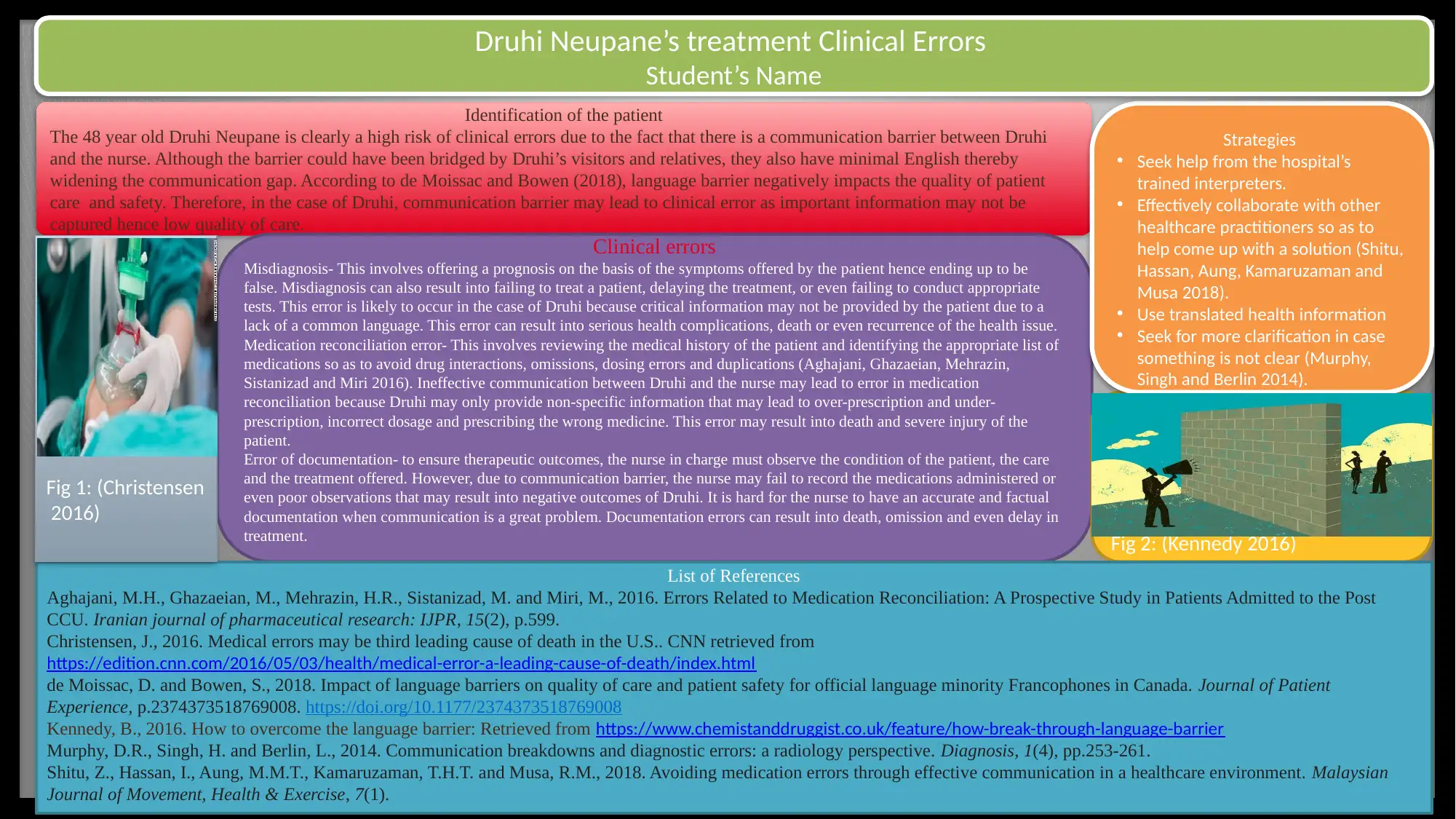Identifying Clinical Error Risks for Druhi Neupane in Hospital
VerifiedAdded on 2023/04/03
|1
|569
|313
Report
AI Summary
This report analyzes the case of Druhi Neupane, a 48-year-old patient with a language barrier, and identifies her high risk of clinical errors in a hospital setting. The report highlights the communication challenges between Druhi and the healthcare staff, and how this barrier increases the likelihood of misdiagnosis, medication reconciliation errors, and documentation errors. It details the potential consequences of each error, including serious health complications, death, or treatment delays. The report also suggests strategies to mitigate these risks, such as using hospital interpreters, collaborating with other healthcare practitioners, using translated health information, and seeking clarification when needed. The analysis underscores the importance of effective communication for patient safety and quality of care.






![[object Object]](/_next/static/media/star-bottom.7253800d.svg)